 MAMEY SPOTE This is a very unusual fruit, and I get asked about it all the time. They are seasonal, so something that I don't regularly stock. But when they are in season, I always try to encourage my customers to try one. They are unique to the Caribbean and especially Belize. The Mamey Sapote (Pouteria sapota) is native to Central American lowlands and Mexico. The flesh is salmon or red colored and has a sweet taste with a texture imilar to custard. Mamey Spote has a very distinctive flavor which blends well with milk, other fruits, and is especially tasty in smoothies. It takes from 13 to 24 months from flowering to fruit maturity. This large, long fruit has coarse, brown, leathery skin and yields to a gentle squeeze when ripe. It grows well throughout the Caribbean islands and the lowlands of South America, Central America, and in the West Indies--including the Dominican Republic, Puerto Rico, and Cuba where it is planted as a dooryard fruit and cultivated commercially for the local market.
2 Comments
 THE CALLALOO PLANT - Great in Salads & Served warm Callaloo is a vegetable plant that is grown for its leaves. Callaloo can be compared closely to what many know as spinach. The plant produces large delicious green leaves, the steams are also being edible. Belizean's have taken this plant, and created many wonderful dishes from the leaves. It is wonderful served fresh in salads, and is a delicious - cooked as a side dis to a main entree. There seem to be many different varities of Callaloo. Callaloo is a variety of Amaranth. The technical name is Amaranth Tricolor or Amaranth Gangeticus. Some varieties of Amaranth are grown for seed production, Amaranthus Creuntus and Amaranthus Hypochondiacus are examples. In many cases the leaves of these plants can also be eaten. Some species are grown for ornamentation like, Love Lies Bleeding and Josephs Coat. You may find Amaranths grown for their leaves, under many different names; Shen Choy, Chinese Spinach, Indian Spinach, Hin Choy, Bush Greens and many other names.  CALLALOO SOUP 1 pound callaloo leaves or spinach 6 c. chicken stock 1 onion, chopped 1/2 pound salt beef, fat removed and diced 1/2 tsp. ground black pepper 6 Tbsp. minced shallots 1/4 tsp. dried thyme 1 green chile pepper, chopped 1 cup okra 1/2 pound crabmeat DIRECTIONS
 JICAMA - A Garifuna Treat Jicama is a crispy, sweet, edible root that resembles a turnip in physical appearance, although the plants are not related. Jicama is very popular in Mexican cuisine and has been cultivated in South America for centuries. Jicama has a very unique flavor, and for this reason, it lends itself very well to salads, salsas, and vegetable platters. The Jicama root can sometimes grow very large. I recommend not picking large jicama's. If they exceed the size of two fists, they begin to convert the sugars that give jicama its sweet flavor into starches, making the root somewhat woody to the taste. Jicama is actually a legume, and it grows on vines that may reach 20 feet (six meters) in length. The vines tend to hug the ground, terminating in tubers that may grow up to 50 pounds (22 kilograms) in size, although the majority of jicama roots sent to market are approximately three to four pounds (1.3-2 kilograms) in weight. Before eating, the coarse brown outer layer of the jicama should be peeled to reveal the white inside. When choosing jicama, I recommend looking for medium sized, firm tubers with dry roots. Do not purchase jicama that has wet or soft spots, which may indicate rot, and don't be drawn to overlarge examples of the tuber, because they may not be as flavorful. Jicama keeps very well in your refrigeration for up to two weeks. 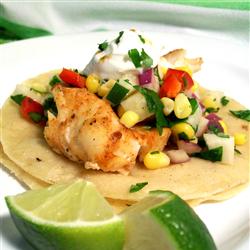 FISH TACOS w/ Corn JICAMA Salsa 1 c. corn 1/2 c. diced red onion 1 c. peeled, chopped jicama 1/2 c. diced red bell pepper 1 c. fresh cilantro leaves, finely chopped 1 lime, zested and juiced 2 Tbsp. sour cream 2 Tbsp. cayenne pepper 1 tablespoon ground black pepper 2 Tbsp. salt 6 (4 oz.) fillets Tilapia 2 Tbsp. olive oil 12 corn tortillas, warmed Directions
 PRICKLY PEARS OF BELIZE If you've never had a prickly pear before, you're in for a real treat. You can get about one cup of juice from one average sized prickly pear. For a very refreshing drink, mix equal parts of prickly pear juice and limeade. This small, lightbulb-shaped fruit actually sits on top of the stem—the nopals—of the prickly pear cactus, a plant native to Belize. Depending on the variety, a ripe prickly pear will take on the color of the flower. Also depending on the variety, the flavor can evoke watermelon, citrus, or strawberry. Because it is a fruit of the cactus, be careful handling it, since not all the spines may have been removed. Prickly pears can be peeled and eaten raw but can also be used to make liqueur, syrup, jellies, preserves, and candy. You can also try drinking its juice as a preventative measure against hangovers. Prickly pear juice works wonders in cocktails and can be used in vinaigrettes for salads. I've used the juice to flavor cream cheese frosting for a lime flavored cupcake, and have seen others boil it down with a bit of orange and lemon juice to make a sauce for fruit salads and cheesecakes. Many Belizean markets and farmers carry prickly pears. Be fore-warned though, while the ones in markets have been cleaned of the tiny hair-like thorns, the ones fresh off the cactus are covered with them, so be sure to handle them with heavy leather gloves and scrub them hard to ensure all the painful little barbs are off. Either way, handle them carefully or with gloves just in case. HOW TO CUT A PRICKLY PEAR 1. Slice both ends of the prickly pear and discard them. 2. Make one long vertical slice down the body of the prickly pear. 3. Slip your finger into the slice and grab a hold of the skin. 4. Begin to peel back the thick fleshy skin that's wrapped around the prickly pear. Discard the skin. You'll be left with the prickly pear itself. The flesh is studded with tons of little edible seeds, if you like them, feel free to just chop the prickly pear up and eat, seeds and all. I myself prefer just the juice. To extract the juice, place the "husked" prickly pears into a blender or food processor and pulse until liquefied. Place the juice into a fine mesh sieve and push out the juice into a pitcher or bowl. Discard the remaining pulp and seeds.  SOURSOP - THE UNIQUE TASTE OF THE CARIBBEAN The Soursop is a broadleaf, flowering, evergreen tree, which is native to Central America, specifically Belize. The fruit produced by this tree is called "Soursop", and is adapted to areas of high humidity and realitively warm winters. There are over 60 species of Soursop. It is generally known in most Spanish speaking countries as guanabana. The soursop tree is a low-branching, bushy, slender tree. It's limbs can reach a height of 25 or 30 ft. The leaves, alternate, smooth, glossy, and dark green on the upper surface, while beneath they are lighter in color, oblong, and elliptic. Flowers will emerge anywhere on the trunk, branches or twigs. The fruit is more or less oval (or heart-shaped). The size ranges from 4 to 12 inches long and up to 6 inches in width, and the weight may be up to 10 or 15 lbs. The fruit is compound and covered with a reticulated, leathery but tender, inedible, bitter skin, which protrudes short "spines". The tips break off easily when the fruit is fully ripe. The skin is a dark-green in the immature fruit, becoming slightly yellowish-green (as seen in the picture), when it becomes mature. Its inner surface is cream-colored and granular and separates easily from the mass of snow-white, fibrous, juicy segments. In aroma, the pulp is somewhat pineapple-like, but its musky, subacid flavor is unique. Most of the closely-packed segments are seedless. In each segment there is a single oval, smooth, hard, black seed, about l/2 to 3/4 inches long; and a large fruit may contain from a few dozen to 200 or more seeds. Its flavor has been described as a combination of strawberry, pineapple, with citrus flavors notes contrasting with an underlying creamy flavor reminiscent of coconut or banana. This is a very popular flavor with most Belizeans, and if you ask the local ice cream store, Soursop ice cream is one of their top selling flavors with most locals.  CHO CHO'S IN BELIZE The Jamaican cho cho is a tropical fruit that is a native of Mexico, Belize and Central America. It carries a thin green skin fused with its flesh. There are quite a few varieties; however they all have pear or slightly oval shape. For this reason, in some Spanish speaking countries - the world cho cho means, vagina. The Jamaican cho cho is used by many as a vegetable or fruit. As a fruit, it has a rather bland taste, when eaten raw in salads or salsa with lemon juice. As a vegetable (often in a cooked form), it tastes like something between a potato or a cucumber. The Jamaican cho cho is a good source of vitamin C and amino acids. It adapts well to the tropics and has become a major food in diets for many here in Belize. While Belizean's only eat the fruit portion of the plant, other countries use other parts of the plant as well (such as the root, which has a rather starchy taste). The cho cho leaves are believed to have diuretic and cardiovascular properties. In some Asian countries the shoot is consumed as a vegetable.  WHAT IS THAT? Its call Carambola or Star Fruit. Most Belizeans, know this fruit by the name, "Five Fingers". The carambola, five finger fruit (as it is called here in Belize), has been nicknamed the "star fruit" because, when sliced crosswise, it is shaped like a star. The star fruit is grow abundantly here in Belize. They are mainly found in tropical areas including the Caribbean, Hawaii, Central America, and parts of South America and Asia. It has a thin glossy golden-yellow skin and translucent (permits light to shine through) yellow flesh. A star fruit, which does not have to be peeled, may be sweet or tart depending on the variety. It may be eaten whole, or used in salads, desserts, or as a garnish. The "Five Fingers" tree attains a height of 30 feet and produces small, fragrant, rose-coloured flowers throughout the year. The tree also produces fruits more than once per year. On the tree the fruit has a variety of appearances. The very ripe fruit has a golden yellow colour; half-ripe its a lemon green and unripe they are very green, all can be eaten. It also has a variety of tastes when eaten raw. The fruit is sweet, watery, slightly acid and pleasant to taste. When the fruit is cut across it has a striking star shape, hence the reason for the name. The skin of the fruit is thin and somewhat waxy and there's no need to peel the fruit, although the outer edge of the ribs may be removed if they are bruised. I'm always offering samples of fruits and vegetables at my fruit stand. Stop by and try the this exotic tropical five finger fruit next time you pass by.  DRAGONS GROWING IN THE WILD Dragon fruit is among the most nutritious and exotic fruits found in Belize. Stop by and try one, at my fruit stand here in Belize. They are typically, not something you will find back home, as they can grow only in tropical climates, such as Central America. This is a fruit, that I often get to experience with the guest of Belize - for the first time. Some really like it, and others say it has no flavor. You be the judge. Typically, the fruit has red pulp, or red flesh if you like. The fruit originates from the dragon fruit cactus plant, which usually grows like a vine. Unlike day pollination done by bees, it is surprising to note - that this fruit blooms at night, where pollination is caused by nocturnal living things such as bats and moths. Despite the fact that people avert and dislike bats, they play a very important role in the pollination and formation of this fruit. This is because the dragon fruit cactus plant, only blooms successfully after a complete pollination by bats or moths. The dragon fruit is native fruit to Central America. It dates back to the 13th century, according to Aztec literature and history. Colombia and Nicaragua (other South American countries) also grow dragon fruits for commercial purposes. The dragon fruit needs a temperate rainfall of around 600-1300mm and a maximum temperature of 38-40 degrees Celsius. Too much rainfall leads to the flower dropping and the fruit rotting. Red dragon fruit featuring (1) red skin-red flesh, (2) yellow skin-white flesh, and (3) red skin-white flesh, are the three most common varieties cultivated for commercial purposes.  MARIA'S FRUIT & VEGETABLE STAND THE PAPAYA OF CENTRAL AMERICA Papayas are one of the fruits, that I sell the most of, here at my fruit stand in San Pedro. Everyone seems to love papayas, and they are often the one fruit that is available year round, regardless of the season. The papaya plant has various uses, but is most famous for its sweet and tender fruit. Indeed, this South American fruit is one of the most popular in the world, and is now grown in every tropical and subtropical country. The papaya is believed to have originated in southern Mexico and eastern Central America. By the time that the Spanish arrived, the fruit had already spread throughout Central America and into South America. The Spanish were the first to introduce it to Asia in 16th century via the Philippines. The fruit then spread to India and eventually to Europe. By the 19th century, the fruit was already being grown in all tropical regions throughout the world. Today, the fruit can be found in a variety of cultures and their foods, ranging from the savory to the sweet. Though the fast-growing plant resembles a tree, the papaya is actually an herb that reaches 20-30 ft in. height with a rough stem is typically 12-16 in. thick (Morton). The large leaves have long stems (1-3.5 ft) and their blades are spit into 7-11 main lobes. The stems have a dark green to purple color while the leaves are green with yellow ribs and veins. Both contain milky fluid. The papaya has different flowers depending on the sex of the plant. Some herbs bear female (or bisex) flowers, which are short, white, five-petaled flowers, while others bear male flowers, which are clustered on long clusters called staminates. Others even have hermaphrodite flowers or may have flowers of both sexes. The fruit of the papaya grows and hangs from the central stem. There are two popular varieties of the papaya fruit: Hawaiian and Mexican. Both are pear-shaped, but the Hawaiian papaya tends to be smaller and easier to harvest while the Mexican can reach up to 15 in. The fruit has a thin, waxy skin that turns from green to yellow when ripened. Like the leaves and stems, an unripe papaya fruit has an amount of latex. When ripe, both varieties have soft, juicy flesh that encloses many small black seeds. The color of the flesh can range from yellow-orange to pinkish red. The raw fruit contains the enzyme papain, which has a variety of uses. The ripe papaya fruit has a sweet, somewhat musky taste and soft texture that is comparable to the cantaloupe. Fresh papaya is eaten by simply slicing and peeling the fruit. The papaya is appreciated in a variety of cultures, ranging from South American to Asian, and prepared a variety of ways. It is most commonly used in deserts and sweets, such as with ices and ice creams, cakes and pies, or candied sweetmeats. Firmer fruits can also be baked for savory dishes and treated like a root vegetable. It is also popular as a juice or in blended drinks. The green, unripe papaya is especially popular in South Asian cuisine. Because the latex cannot be consumed, the fruit must go through a complex process of preparations before it can be consumed. It is then used raw in fresh salads or cooked. Other parts of the papaya plant are also consumed. The leaves are often prepared like spanich in India while the seeds are sometimes ground to resemble black pepper (Morton). The leaves can also be used to wrap foods, working as a means to hold the food or tenderize it. The enzymes in the papaya fruit, papain, are also used for a meat tenderizer. As a testament to the widespread popularity of the plant, the papaya is used in many ways throughout the world. Generally, it is believed to help with digestion, to purge intestinal worms, and as a contraceptive. In Brazil, the unripe fruit is used to treat ringworm and dermatitis and, when ripe, is consumed for constipation. The papaya flower is used by Brazilians is used as a digestive and to treat low blood pressure (Duke). The Amazonians consume the roots for indigestion and the fruit as an antiseptic (Due). In Mexico, latex from the leaves is also used to treat constipation while it can also be used to treat skin rashes (Ross). The fruit is also used to deal with unwanted pregnancies through hot water extracts of the seeds and flowers. In Paraguay, the dried seeds are used to expel intestinal worms (Ross). Hawaiian mothers consume an infusion of the fruit to encourage the production of breast milk. Papaya leaves have been used as a tobacco-substitute and also a primary form of soap (Morton). The enzyme papain has a variety of uses, ranging from treating fabrics to clarifying beer (Morton). 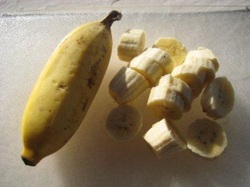 Apple Banana MARIA'S FRUIT & VEGETABLE STAND MONKEY BANANA'S Apple Bananas are a small, sweet banana, with an apple after taste. Thus the name, apple bananas. The flavor that is far different from the typical sweet tropical banana that you will find on fruit stands in Belize. Over 95 million metric tons of bananas are grown each year. Although Central America and the Caribbean are best known here for their bananas, they only produce 35% of the bananas consumed in the world. India is actually the world's largest banana producer. My favorite variety of banana is the Apple Banana. Trent, Christina and Lauren call these "monkey bananas", because they are smaller than regular bananas. As Lauren says, "they are small and easy for a monkey to hold". The flesh of the apple banana is firmer and creamier, where the other varieties tend to be soft and starchy. The fruit size tends to be smaller and makes a perfect snack for small children and monkey's. Bananas are probably one of, if not the most popular of fruits. Available year round, we take for granted the versatility and usefulness of bananas, an integral part of modern life. Bananas are often the first solid food fed to babies, especially here in Belize, mashed into a paste and fed to hungry infants being weaned from their mother's milk. We eat them whole as a snack; in our cereal; make it into bread; on top of ice cream; and countless other ways. They are so popular, it's said that much of the profits of grocery stores stems from this one item, out of the thousands of products sold in modern supermarkets. Entire boatloads of special containers are shipped continuously from Central and South America to the United States, where bananas are then carefully ripened and delivered for sale. Other than eating apple bananas, what can you do with an apple banana? Here is a great recipe for all my customers. APPLE BANANA CUPCAKES 2 cups all-purpose flour 1 teaspoon baking soda 1 teaspoon salt 1/2 teaspoon ground cinnamon 1/2 teaspoon ground nutmeg 2/3 cup shortening 1 1/4 cups white sugar 2 eggs 1 teaspoon vanilla extract 1/4 cup buttermilk 1 cup ripe apple bananas, mashed 2 apples - peeled, cored and shredded Directions
|

WELCOME TO BELIZE
My name is Lauren Maya Turley. I've lived in Belize now for the past 14 years, basically since I was born. Belize is my home. Archives
April 2012
Categories
All
|


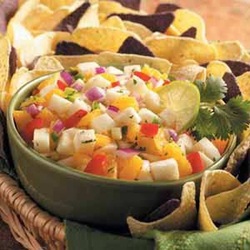











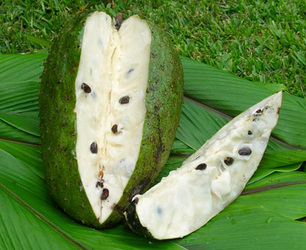
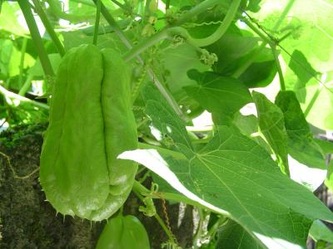






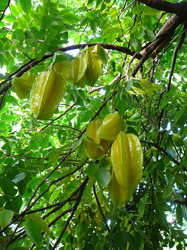
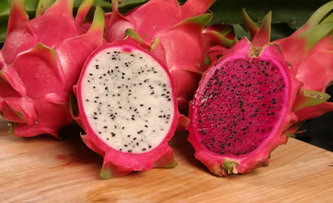

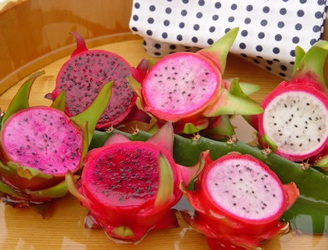


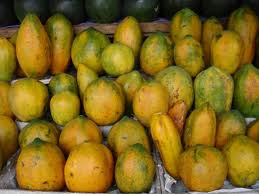



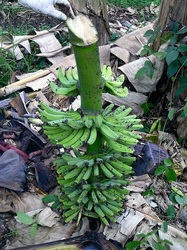

 RSS Feed
RSS Feed